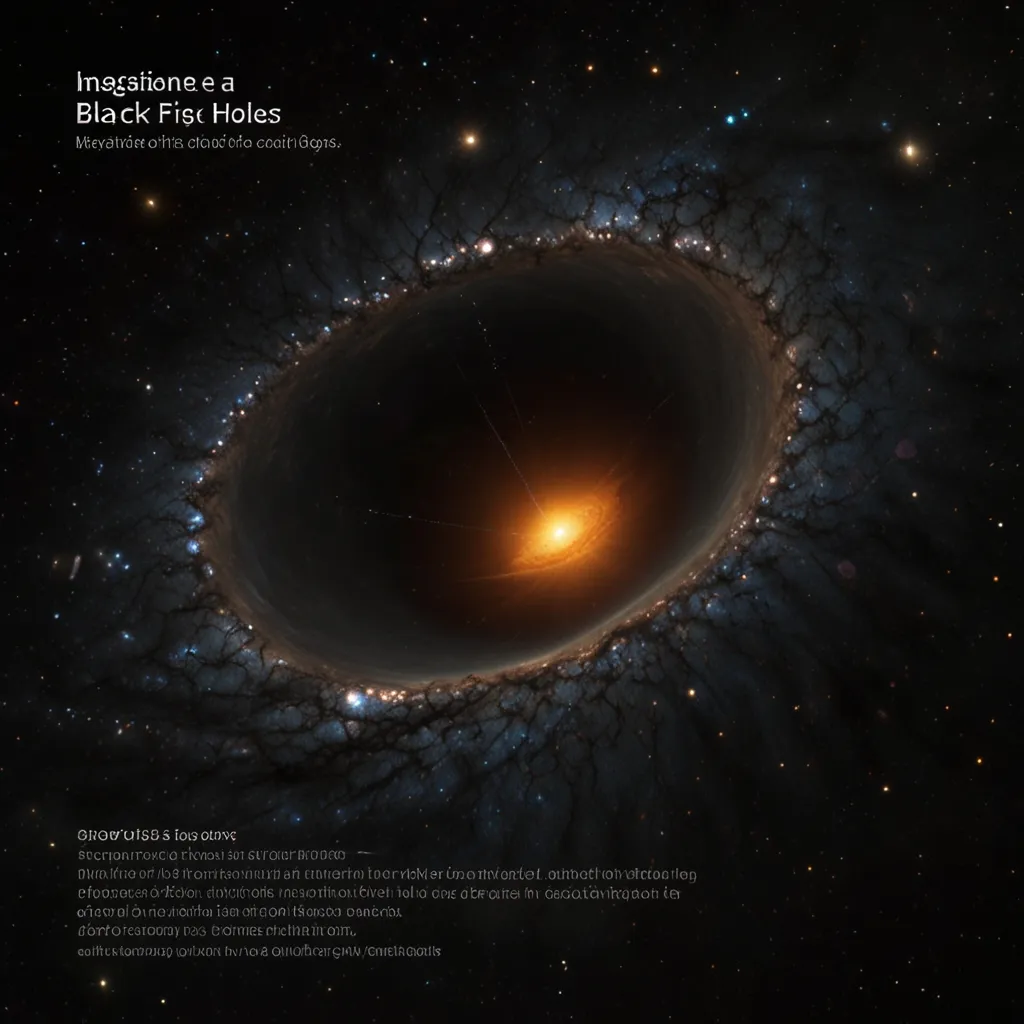Black holes are some of the most bizarre and fascinating objects in space. Their massive density and immense gravitational pull ensure that not even light can escape them. Though the Milky Way could house over 100 million of these cosmic beasts, detecting them is no easy feat. At the heart of our galaxy, there’s a supermassive black hole named Sagittarius A*, located roughly 26,000 light-years from Earth, with a mass approximately 4 million times that of the Sun.
The Event Horizon Telescope (EHT) made a groundbreaking discovery when it captured the first-ever image of a black hole in 2019. This stunning picture shows the black hole at the center of the M87 galaxy, which is 55 million light-years away from us. Albert Einstein’s general theory of relativity first predicted the existence of black holes in 1916, and the term “black hole” was coined by American astronomer John Wheeler in 1967. The first compelling evidence of a black hole came much later in 1964 through signals picked up by a sounding rocket. In 1971, astronomers concluded that the source of these X-rays was a bright blue star orbiting an unknown dark object—a black hole.
NASA predicts that one out of every thousand stars can become a black hole. With over 100 billion stars in our galaxy, the Milky Way could harbor around 100 million black holes. Despite their elusive nature, NASA estimates that millions to a billion stellar black holes could exist in the Milky Way alone. The closest known black hole to Earth is the “Unicorn” black hole, located about 1,500 light-years away. It’s unique due to its relatively low mass and its position in the constellation Monoceros.
The first real image of a black hole, captured by the EHT team, was a monumental accomplishment. The EHT image of the M87 galaxy’s black hole illustrates the sudden disappearance of light particles. This discovery has broadened our understanding of black holes, leading scientists into new realms of study. A more recent image in 2021, captured in polarized light, revealed further details about the black hole’s magnetic fields.
Black holes have three main parts: the singularity, the outer event horizon, and the inner event horizon. Essentially, the event horizon is the point of no return—once anything crosses this boundary, it can never escape. The singularity is where the black hole’s mass is concentrated, making it infinitely dense. Scientists study black holes indirectly since they can’t be observed directly through conventional means. When gas and dust fall into a black hole, radiation is emitted, which astronomers can detect. However, sometimes matter doesn’t get swallowed but rather is ejected at high speeds, creating bright jets visible from great distances.
The EHT’s 2019 image of the M87 black hole was the result of two years of analysis, a testament to the complexity of assembling data from telescopes worldwide. Researchers are keen to capture more black hole images, especially of Sagittarius A*, the black hole at the center of our Milky Way. This black hole is intriguingly quieter than expected, possibly due to magnetic fields suppressing its activity. Another study suggested it is surrounded by a cold gas halo, adding more depth to our understanding.
Black holes come in various forms. Stellar black holes form when massive stars exhaust their nuclear fuel and collapse under their gravity. These black holes are relatively small but incredibly dense. Supermassive black holes, millions or even billions of times the mass of the Sun, dominate the centers of most galaxies, including our own Milky Way. Their origins are a mystery, but several theories exist, ranging from the merging of smaller black holes to the collapse of massive gas clouds or stellar clusters. Intermediate black holes (IMBHs), could be the missing link, formed through repeated star collisions or being the aftermath of merging events.
In 2014, researchers discovered an IMBH in a spiral galaxy. Recent studies in 2021 identified IMBHs through observed gamma-ray bursts. According to the Sloan Digital Sky Survey, black holes with masses ranging between 36,000 to 316,000 solar masses might exist in dwarf galaxies.
The discovery of binary black holes, pairs of black holes orbiting each other and merging, was made in 2015 using the Laser Interferometer Gravitational-Wave Observatory (LIGO). These findings revealed a lot about the masses and spin orientations of black holes. Two scenarios explain their formation: they either form from companion stars that explode and leave behind black holes with the same spin orientations, or they form in star clusters and have unpredictable spin orientations.
Black holes can be detected in several ways. Gravitational waves are ripples in space-time caused by massive objects like black holes merging. These can be detected by advanced observatories like LIGO and Virgo. Invisible companions in star systems, as observed in HR 6819, indicate the presence of black holes through their gravitational effects on visible stars. X-ray emissions from accretion discs, as seen in Cygnus X-1, also point to the existence of black holes.
Gamma-ray bursts are another clue. These intense bursts happen when massive stars collapse into black holes, releasing more energy in seconds than our Sun will emit in its entire lifetime. Observing these bursts helps us understand black holes’ births. Lastly, spaghettification is a term that describes how a star or object would be stretched into thin threads by a black hole’s immense gravitational pull. This was observed in 2020 when astronomers saw a star being torn apart by a supermassive black hole, an event that happened 215 million light-years away.
The direct image of a black hole is a lasting testimony to technological advancement and scientific collaboration. Released in April 2019, the image showed the supermassive black hole in the center of galaxy M87, captured by the Event Horizon Telescope, an international array of telescopes. This image provided direct visual evidence of what was once only theorized.
Black holes remain one of the universe’s most captivating mysteries, but with advancing technology, we are gradually uncovering their secrets. What do you think about black holes? Do they fascinate you as much as they do astronomers? Feel free to share your thoughts!






